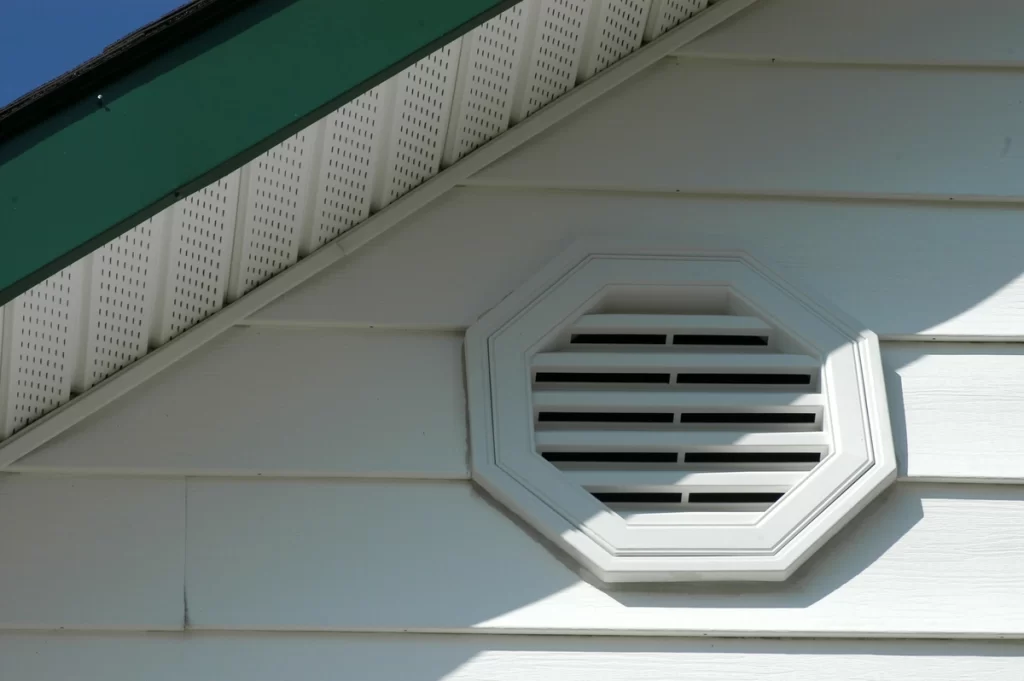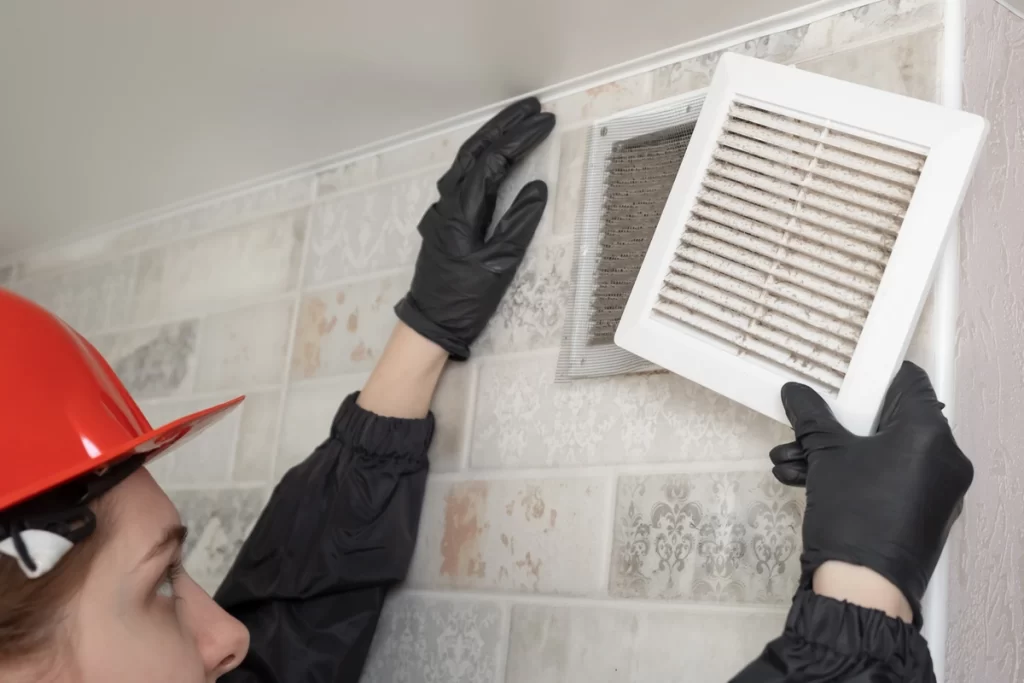When most of us think of vents in our homes, we probably think of curling up near a heating vent during the winter and warming our toes. Or maybe the dryer vent. (will we ever remember to clean it?)
What you likely don’t think about is your roof vents. In fact, we’re willing to bet that some of you don’t even know that you have roof vents.
So, what exactly are roof vents? And why are they crucial to your roof’s health? We are here to tell you. Specifically, we’re going to explain the purpose – and importance – of a soffit vent. Whether you need roof repairs or roof replacement, it’s important to consider your soffit vents and more.
But don’t panic! We’re going to break down:
- How many soffit vents you need
- What they do
- The dangers of not installing them
Keep reading to learn all you need to know about your soffit vents!
What Is a Soffit Vent?

Let’s start with the basics. What exactly is a soffit vent?
While the average homeowner may think about their roof in terms of shingles and gutters, the truth is that a roof is made up of many complex elements, all designed to help your home function properly. One of those elements is soffit.
Understanding Soffit
Soffit is a finishing material that is installed on the underside of the eaves of your home (that’s the part of your roof that extends out past the walls). Soffit can be made of a variety of materials, including:
- Wood – This is one of the most traditional types of soffit. It has a natural, rustic feel but is prone to rot and splintering. Because of this, expect to spend more time on maintenance.
- Vinyl – Vinyl is a popular choice due to its affordability and low maintenance. Despite that, it isn’t particularly durable. As a plastic-based material, it is prone to swelling and shrinking as the temperature changes.
- Fiber Cement – If durability is your main concern, fiber cement is the right choice for you! Fiber cement is designed to last, but expect to pay more to have it installed.
- Aluminum – Aluminum is much more durable than wood or vinyl and can stand up to the weather. However, know that over time it can start to look chalky and faded.
Understanding Soffit Vents
Soffit vents are very similar to soffit itself. The difference is that the vents have small perforations in order to allow for proper ventilation.
Soffit vents are designed to avoid trapping warm air and humidity in your attic. Without this, your attic and roof are vulnerable to a wide range of damages.
How Many Soffit Vents Should You Have?
Having the proper number of soffit vents can help ensure that your attic ventilation works as it is supposed to. But how many should you have?
Professional roofers generally advise homeowners to have one square foot of ventilation for every 150 square feet of attic. While this is typically enough to ensure good airflow, we always recommend consulting with an experienced contractor to make sure that all of your home’s unique quirks are accounted for.
5 Dangers of Improper Ventilation
Is attic ventilation really that big a deal? After all, it doesn’t seem likely that the world will end if you are short a soffit vent or two.
The truth, though, is that bad ventilation can wreak havoc on your home in more ways than you would think. Here are just a few of the dangers of not installing soffit vents.
1) Ice Dams
If you live in a cold climate, you are likely quite familiar with ice dams. They show up as a string of icicles dangling from your roof. And while they may be pretty, they disguise a much larger problem.
Ice dams form when poor roof insulation causes hot air to escape from your roof, melting the snow that sits on top. As the melted snow travels down the roof, it begins to refreeze, creating an ice dam that blocks water from rolling off of the roof and into the gutters.
Ice dams can cause large amounts of damage to your roof. If the water damage is severe, you may be looking at a full roof replacement.
2) Mold and Mildew Growth
Heat being trapped in your attic isn’t just a problem when it comes to temperature. High heat can also create humidity issues. When a humid space is left unchecked, it becomes a breeding ground for mold and mildew growth. And while the majority of mold isn’t harmful to human health, it can create an unpleasant smell that is difficult to get rid of.
3) High Heating and Cooling Bills
When your home has poor ventilation, it can become very energy inefficient. This means that you may be paying more than you should be on your heating and cooling bills. A roofing contractor will be able to assess the situation and determine whether more ventilation or insulation is needed to fix the problem.
4) Roof Damage
Too much moisture trapped inside your attic can cause the roof itself to degrade faster than normal. This may appear in the form of mold, fungus, or moss growth on your shingles. You may also notice rust forming on your roof flashing and nails.
5) Damage to Personal Items
A moist attic can also lead to interior damage. You may find that your personal belongings in storage are water stained or moldy. Additionally, excess moisture can stain walls, ceilings, and floors.
Talk With a Professional

When it comes to proper ventilation, you don’t want to wait until the problem gets worse. Instead, call on Monarch Roofing to help you with your soffit vent installation! As the leading experts in the area, when can help you identify problem areas of your roof and come up with simple solutions to solve them. Contact us today to get your 60-second roof quote.





